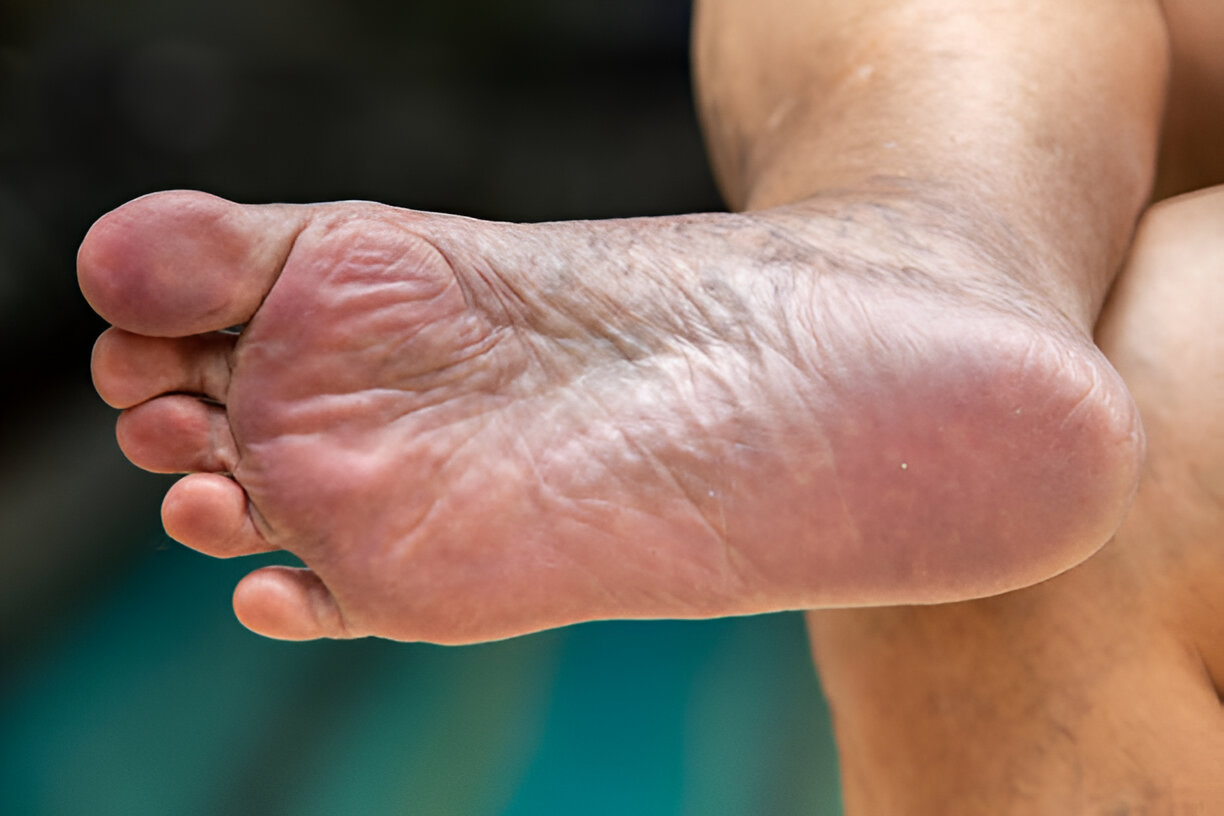
Athlete’s Foot – Causes, Symptoms, and Effective Treatments
Athlete’s Foot, also known as Tinea Pedis, is a common fungal infection that affects the skin on the feet. It is caused by dermatophyte fungi, which thrive in warm, damp environments such as locker rooms, swimming pools, and inside tight shoes. This condition is widespread, especially among athletes, individuals with excessive foot sweating, and those who frequently wear non-breathable footwear.
Understanding the causes, symptoms, and effective treatments of Athlete’s Foot is crucial for preventing and managing the condition before it worsens. Left untreated, it can lead to pain, discomfort, and secondary infections. In this guide, we’ll explore the nature of Athlete’s Foot, how it spreads, its causes, symptoms, treatments, and prevention methods.
What is Athlete’s Foot?
Athlete’s Foot is a contagious fungal infection affecting the skin between the toes, soles, and sides of the feet. It is caused by fungi from the Trichophyton group, which invade the skin when given the right conditions—warmth, moisture, and darkness.
How Athlete’s Foot Spreads
Athlete’s Foot is highly contagious and spreads through:
- Direct contact with an infected person’s skin.
- Walking barefoot in damp public areas like gym showers, pools, and locker rooms.
- Sharing contaminated items like socks, shoes, towels, or bed linens.
Types of Athlete’s Foot
- Toe Web Infection – The most common type, occurring between the toes. It causes itching, peeling, and redness.
- Moccasin-Type Infection – Affects the sole and sides of the foot, leading to thickened, dry, and cracked skin.
- Vesicular Athlete’s Foot – Characterized by blisters filled with fluid, often appearing on the instep, toes, or sole.
Causes of Athlete’s Foot
The primary cause of Athlete’s Foot is the Trichophyton fungus, which thrives in warm and moist environments. However, certain factors increase the risk:
- Walking barefoot in damp areas – Locker rooms, public pools, and communal showers are breeding grounds for fungi.
- Wearing tight, non-breathable shoes – Traps sweat and moisture, creating an ideal environment for fungal growth.
- Poor foot hygiene – Not washing and drying feet properly encourages fungal infections.
- Excessive sweating (hyperhidrosis) – Increases moisture levels, making feet more susceptible to infections.
- Sharing towels, socks, or shoes – Spreads fungal spores from one person to another.
Common Symptoms of Athlete’s Foot
Athlete’s Foot presents varying symptoms, depending on the severity and type of infection. Common signs include:
- Itchy, burning sensation between the toes.
- Peeling, cracked, or scaly skin, particularly in affected areas.
- Redness and inflammation, leading to discomfort.
- Blisters or ulcers in severe cases, which may become painful.
- Foul odor, often due to bacteria growing alongside the fungus.
If left untreated, the infection can spread to other parts of the body, including the hands, nails, and groin (causing jock itch).
How is Athlete’s Foot Diagnosed?
A proper diagnosis is necessary to differentiate Athlete’s Foot from other skin conditions like eczema or psoriasis.
Diagnosis Methods
- Physical Examination – A doctor inspects the affected area for typical signs.
- Skin Scraping and Fungal Culture Test – A small sample of skin is examined under a microscope to identify fungal presence.
- Differential Diagnosis – Doctors rule out other conditions, such as bacterial infections, psoriasis, or eczema, which can mimic similar symptoms.
Effective Treatments for Athlete’s Foot
Athlete’s Foot can be treated effectively using over-the-counter (OTC) medications, prescription treatments, and home remedies.
A. Over-the-Counter (OTC) Antifungal Treatments
Mild to moderate cases are easily treated with OTC antifungal creams, powders, and sprays. These include:
- Clotrimazole (Lotrimin)
- Miconazole (Desenex, Zeasorb)
- Terbinafine (Lamisil)
Instructions for Using OTC Treatments
- Wash and dry feet thoroughly before applying the medication.
- Apply the cream or spray to the affected areas twice daily for at least two weeks.
- Continue treatment for one week after symptoms disappear to prevent recurrence.
B. Prescription Treatments for Severe Cases
If OTC medications fail, a doctor may prescribe:
- Stronger topical antifungals like Econazole or Oxiconazole.
- Oral antifungal medications, such as Fluconazole (Diflucan) or Itraconazole (Sporanox), for widespread infections.
- Seeking medical help is necessary if the infection spreads, causes blisters, or leads to severe pain.
C. Home Remedies and Natural Treatments
Some natural remedies can help soothe symptoms and support recovery:
- Tea Tree Oil – Has antifungal properties; apply diluted oil to affected areas.
- Vinegar and Salt Foot Soaks – Helps kill fungi and reduce itchiness.
- Baking Soda and Cornstarch – Absorbs excess moisture and prevents fungal growth.
- Coconut Oil and Aloe Vera – Provides soothing and healing effects on cracked skin.
Preventing Athlete’s Foot
Prevention is key to avoiding reinfection and stopping the spread of Athlete’s Foot. Follow these steps:
- Maintain proper foot hygiene – Wash and dry feet daily, especially between the toes.
- Wear breathable shoes – Opt for open-toed or mesh shoes that allow air circulation.
- Use moisture-wicking socks – Change socks regularly, especially after sweating.
- Avoid sharing personal items – Never share socks, shoes, or towels with others.
- Apply antifungal powders or sprays – These help absorb moisture and prevent fungal growth.
Potential Complications of Athlete’s Foot
If left untreated, Athlete’s Foot can lead to serious complications, including:
- Secondary bacterial infections – Cracks in the skin allow bacteria to enter, causing infections like cellulitis.
- Fungal nail infections (onychomycosis) – The fungus can spread to the toenails, making them thick, brittle, and discolored.
- Spreading to other body parts – Athlete’s Foot can infect the hands (tinea manuum) or groin (jock itch).
- Chronic Athlete’s Foot – Some individuals experience recurring infections requiring long-term treatment.
Conclusion
Athlete’s Foot is a common yet preventable fungal infection that thrives in damp and warm environments. Recognizing early symptoms, practicing good foot hygiene, and using appropriate antifungal treatments can help manage and eliminate the infection effectively.
If symptoms persist or worsen despite treatment, it is crucial to seek medical advice to prevent complications. Taking preventive measures, such as wearing breathable footwear and keeping feet dry, can significantly reduce the risk of reinfection.
By staying informed and proactive, you can keep your feet healthy, comfortable, and fungus-free!








